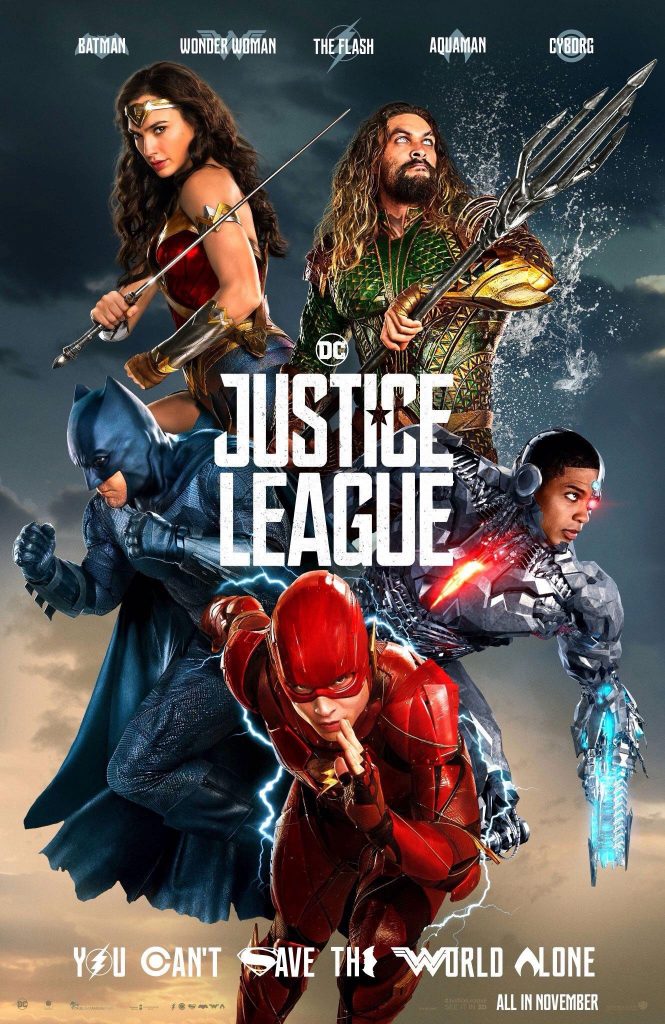
Every so often, the release of a certain movie either elevates a franchise or destroys it. “Justice League” is one of those movies where the stakes are high.
The cinematic presence of the DC Comics cinematic universe opened up in 2013 with the release of “Man of Steel” — for many, this movie still represents the current state of the DC extended universe. Prior to “Man of Steel,” DC extended universe movies had varied wildly in terms of their general reception, and “Justice League” could be what many people point to as indicative of the future of the franchise. Not only that, but it’s significant on its own that the Justice League is finally getting their first live-action movie. Called the “Justice Society of America” at the time of its first related publication, “Justice League” was the comic industry’s first mainstream superhero team, later inspiring the Fantastic Four, X-Men and The Avengers. The “Justice League” franchise, more than most, has a lot of pressure on it to succeed.
Taking place after the events of 2016’s “Batman v Superman: Dawn of Justice,” the newest movie follows Batman and Wonder Woman as they form a team of superheroes to combat the invasion of the alien conqueror Steppenwolf. This team consists of Batman, Wonder Woman, The Flash, Aquaman and Cyborg.
So, how does the film stack up against expectations for it? For starters, the cohesion of the tone and the structure of the movie must be commended. That’s not something I’d praise most movies for, but “Justice League” is a special case. After the movie completed principal filming, director Zack Snyder decided to step down after a family tragedy, and director Joss Whedon was tapped to write and direct needed reshoots. Having two directors can often result in a messy movie with conflicting tones (2015’s “Fantastic Four” is an infamous example), but “Justice League” almost never lost its consistency. It’s admirable that the movie pulled through despite its difficult production process.
Beyond that, the movie succeeds where it most needed to: with its characters. All the main heroes are well-portrayed, and each brings something to the League that makes for a solid superhero team. The heroes returning from other films — Ben Affleck as Batman and Gal Gadot as Wonder Woman — are just as effective as they were in their past movie appearances — granted that you liked them to begin with. Batman falls into the role of leader and mentor to the team, while Wonder Woman maintains the optimism and heroism that defined her character in her previous solo movie.
From the start, the rest of the team poses a bigger uncertainty, as this is our first time meeting them. Fortunately, all of the members serve as great additions to the DC extended universe, and not one of them feels like a drag or like the odd one out. The Flash, played by Ezra Miller, is funny and quirky, serving as both the comic relief and the heart of the team — plus, his speed powers, displayed through the Speed Force, look very cool on screen. Aquaman, played by Jason Momoa, is often considered to be a joke of a character in the mainstream comic book world, but it’s likely that Momoa will break that conception forever. Aquaman is the definition of badass in this movie, and the absolute joy he takes in battling with the alien villains is infectious. Cyborg, played by Ray Fisher, is probably the biggest wild card, since he has a large role to play in the movie and is the least-known member of the League. However, Fisher plays the role well, portraying Cyborg grappling with his new life and the responsibility of being a superhero, without reducing those struggles. Altogether, the group makes a great team of superheroes. This is the most important aspect in influencing the film’s reception because the ways in which these characters are perceived will affect the desire to see them in future movies, especially their solo movies.
The movie falters mainly in its pacing. According to the Wall Street Journal, Warner Bros. required the movie to be no more than two hours long. While I understand the desire to keep the movie from becoming bloated, the film would have benefited from a longer run time. For one, the main villain Steppenwolf gets very little screen time, and thus character development. This is a problem with many superhero movies: When the villain is underdeveloped, it diminishes the effectiveness of the final climax. I’m glad the time on the superhero characters was well-used, but I still wish there were more scenes available for Steppenwolf. Another problem is that there are many times in the movie that feel like scenes were taken out, and events that should have lasted longer are cut short, making it confusing and hard to follow at times.
“Justice League” was definitely an enjoyable ride. The main characters are great, their powers are cool and watching them go up against the armies of alien invaders brought me back to the days of the older “Justice League” cartoons and “Justice League Unlimited.” It’s certainly not perfect and would benefit from a longer cut, but the film undoubtedly got me excited for the future of the DC extended universe.


